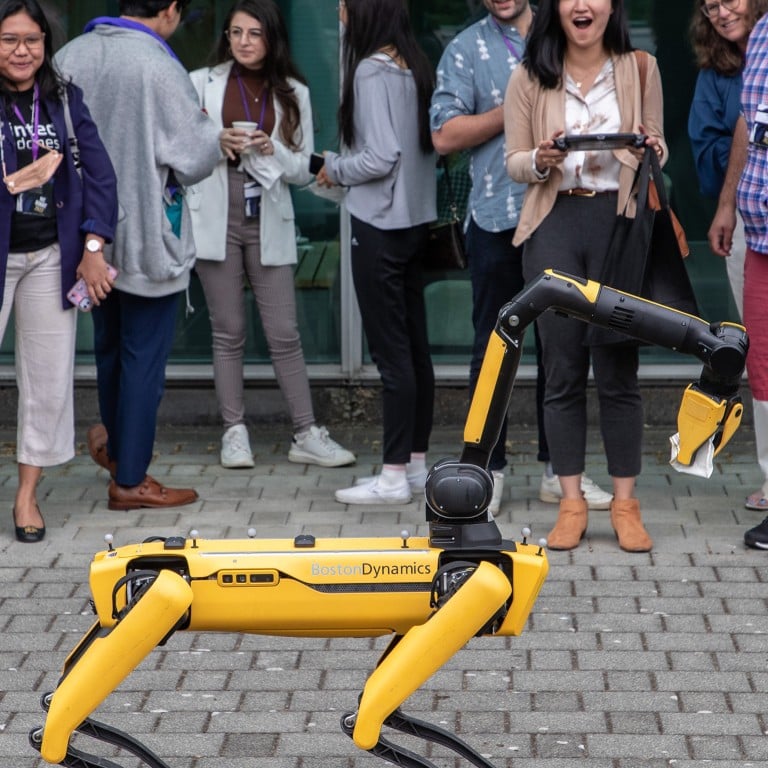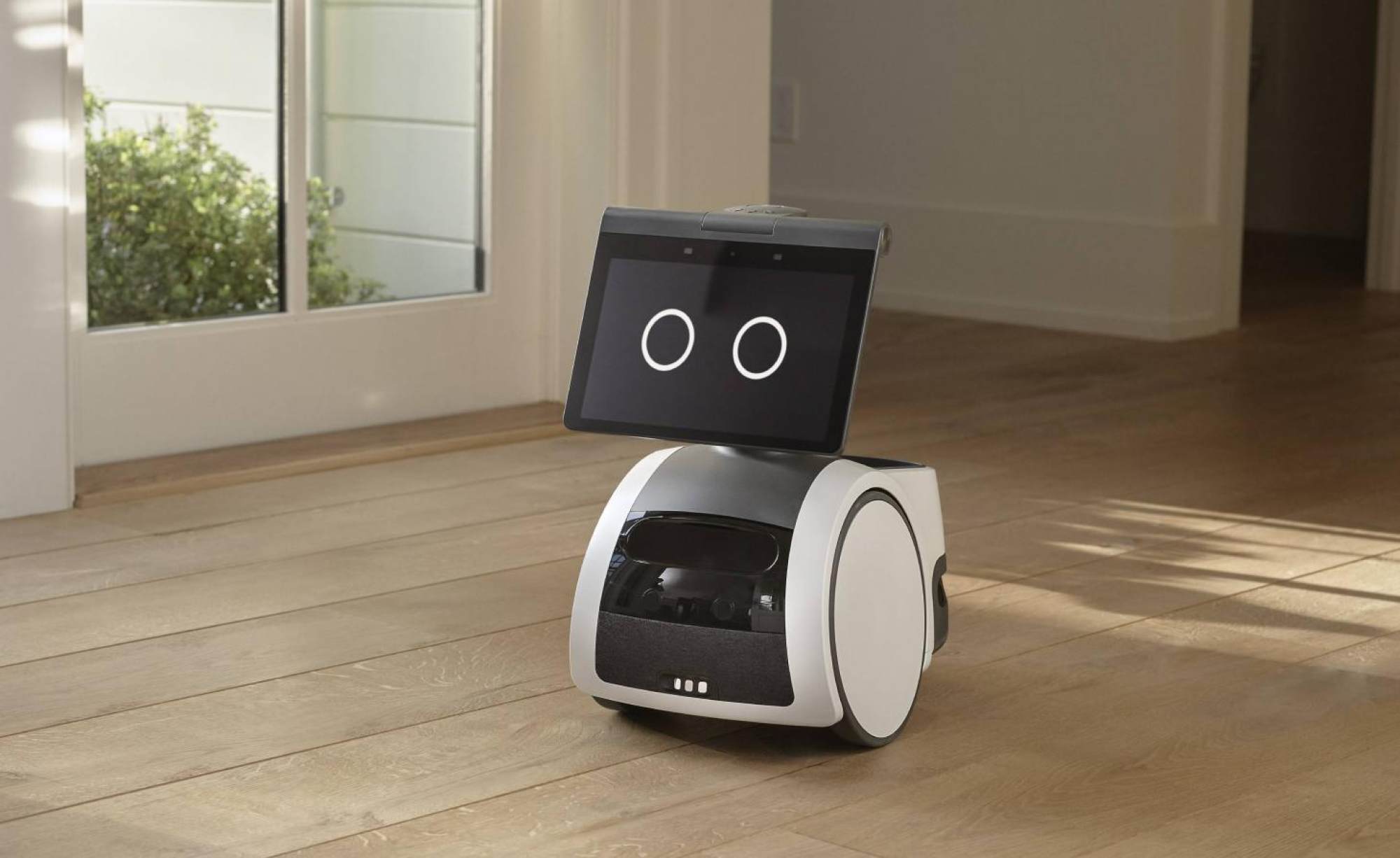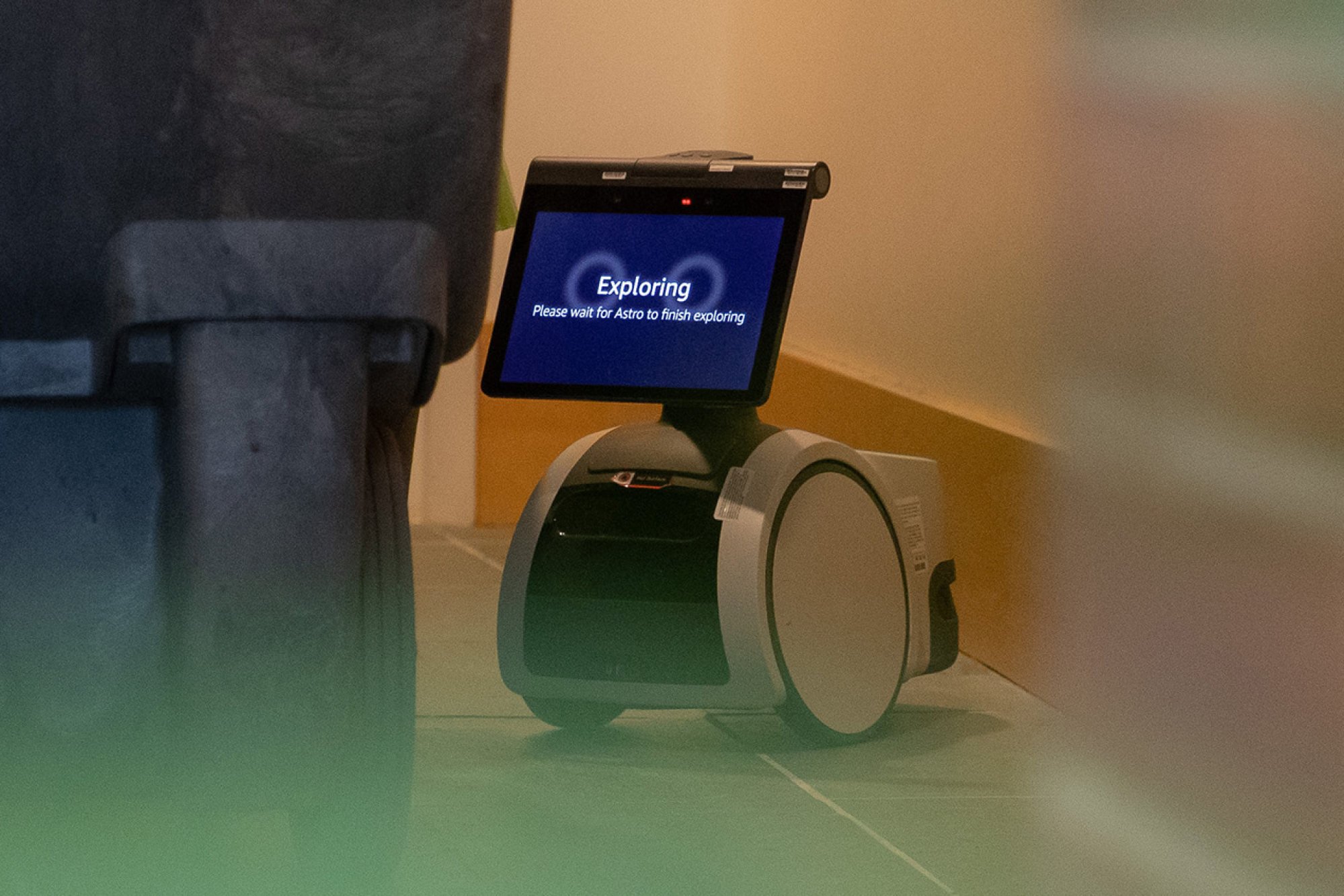
The latest AI robots: Amazon’s Astro, robot dog Spot, the ‘cheap’ Stretch on show at US robot conference
- Some of the latest AI robots starred at We Robot 2022 in US, including Amazon’s Astro, Boston Dynamics’ Spot and Hello Robot’s Stretch
- But their limitations were clear – Astro struggled with glass walls, Spot needs to better traverse tough terrain, and Stretch… actually that worked just fine
The Hollywood version of artificial intelligence (AI) robots has given us the scary future depicted in the Terminator, Matrix and RoboCop movies.
But at a recent gathering of lawyers and roboticists at the University of Washington in the US, you could see the actual status of AI robots. They can get lost when manoeuvring, get tripped up when trying to climb up gravelly terrain and they’ve got big-time issues with multitasking.
Yes, robots are doing astounding things. Just not like in the movies.
But at the We Robot 2022 conference, now in its 11th year and attended by 170 participants from various parts of the world, they did have one eye on the problems the future might hold.
One paper presented was titled “K9 police robots: Strolling drones, RoboDogs or lethal weapons?”

That was from two German researchers. Might as well start discussing the ethics of androids before it is too late.
But there’s one problem with robodogs.
“These robots are not able to make a two-way communication,” said Michael Kolain, legal scholar at the German Research Institute for Public Administration.
“The robot says, ‘You’re drinking vodka. It’s not allowed in public spaces.’ You tell the robot, ‘I’m not drinking vodka. It’s water.’ The robot cannot prove if it’s vodka or water.
“You cannot interact with the robot. It would not be able to process it. It makes no sense to employ in scenarios where social interaction needs to take place.”

At the conference were some of the latest AI robots, such as the Amazon Astro.
The Astro is a 9.5kg (21lb) “home monitoring” robot that can follow you around the house, help deliver calls, manage shopping lists and detect unrecognised persons. It is being offered for an initial price of US$999.99 “exclusively by invitation”. After that, it’ll be US$1,449.99.
Watching the robot in the foyer of the William H. Gates Hall that is home to the University of Washington School of Law, you could almost start feeling sorry for the little guy.

Barely 45cm (18 inches) tall, it was lost as it went this way and that way on its two wheels. It was supposed to be mapping the area, just like it would map the inside of a home. There was a problem.
“It’d take 20 minutes max” to map the inside of a house, said Bill Smart, who brought in the Astro. He splits his time between being a robotics professor at Oregon State University in the US and as an Amazon Scholar studying robots and people.
But homes have mostly solid walls. The law school’s architecturally striking building has huge glass walls.
Even being packed with navigation sensors, a periscope, night-vision LEDs, and a “2x Qualcomm QCS605, 1x Qualcomm SDA660, 1x processor with Amazon AZ1 Neural Edge” processor, the Astro had trouble figuring out dimensions.
“The light beam goes right through the glass,” Smart said.
‘It’s very much a Wild West’: AI art generators are splitting the art world
Astro is the trillion-dollar Amazon’s latest foray into AI devices, combining Alexa, the Ring monitoring camera and even a cup holder that comes with the device.
A review of the Astro in The Wall Street Journal was lukewarm: “Amazon’s list of Astro’s talents is overwhelmingly long, but at home the robot doesn’t do anything particularly valuable.”
The star device at the conference was Spot, a robot dog made by Boston Dynamics.
It was surrounded by the curious. With its four mechanical limbs and add-on arm that can open doors, push or drag objects, it was eerily doglike.
You wanted to take it home, except that the base price started at around US$100,000.

The company said that Spot was released two years ago and that it has sold “several hundred” of them.
You might recall its controversial introduction with the New York City Police Department. The department ended its contract for the robot because “critics likened it to a dystopian surveillance drone”, The New York Times reported in 2021.
The Seattle Police Department in the US Pacific northwest says that it uses robots for arson and bomb investigations to examine or disable potentially hazardous items, and that its SWAT teams use them “to access areas which could be dangerous to officers to enter.”
The Seattle Police Harbour Patrol has robots to conduct underwater evidence and recovery operations.

The Seattle city council has also approved use of US$120,000 in federal money for two “tactical robots with manipulator arms and firing circuits”. The firing circuits are to be used to remotely detonate charges to allow a robot to gain entry into an area.
Police work isn’t what Boston Dynamics touts for its robot dog. It’s for inspecting mining tunnels, oil and gas facilities, and construction sites.
One recent use for two Spot robots, according to a June 22 story in Foreign Policy magazine, was in Ukraine.
Spot can drag unexploded munitions such as cluster bombs to pits containing other munitions, allowing them to be safely exploded.

The Spot on display at We Robot 2022 is being used by the University of Washington’s Robot Learning Lab.
Rosario Scalise, a doctoral student in the programme, is working on Spot’s software program so the robot can be better used in search-and-rescue operations.
Let’s say a hiker is in trouble when climbing Mount Rainier, an active volcano in the US Pacific northwest, where you’ve got glaciers, steep terrain and terrain with loose rocks, he said.
Three key trends that show AI and data are changing the face of medicine
On slippery ground, “humans and animals have a natural physical intelligence. They can anticipate or quickly recover on difficult terrain. It’s a challenge to give this intelligence to a robot. It’s hard for a robot to estimate physical quantities like friction and mass of loose objects like rubble when making contact with the ground,” Scalise said.
Hiking trails in the US are rated into five classes, from a low-risk hike to rock climbing, and “robots can do a second- to third-class hiking trail”, he said.
Not as captivating in appearance as a robot dog, but astounding in its potential, was another device shown at the conference.
It’s called Stretch and was launched in 2020 by the California-based Hello Robot.

It’s simple, weighs only 23kg and consists of a telescopic robotic arm that moves up and down a 1.2m tube on a motorised, wheeled base. And it’s cheap by robot standards, selling for US$17,950.
The simplicity is what makes Stretch so special, even if at first glance it didn’t appear so special when Binit Shah, software lead for the company, had it grasp a cup and pick it up.
A Washington Post story from 2021 told how Stretch helped Henry Evans, who had suffered a massive stroke that left him mute and with quadriplegia.
For Evans, Stretch can scratch an itch, brush his hair and feed him with a spoon. If you’re paralysed, an itch on your forehead can be maddening.
In that, you have the promise of AI robots.
Toyota-backed Pony.ai, Geely to accelerate robotaxi roll-out
So, it’s understandable why another paper presented at the conference was about what can happen if an AI robot that had been around us is suddenly gone.
What happens when a robot at a nursing home is rotated out of service, or a family with an autistic child decides a therapy robot has accomplished all it was supposed to do?
We humans get emotional about robots.
“They name them, dress them and, when they stop working, hold funerals for them,” said the paper, co-authored by Elin Bjorling, research scientist at the University of Washington’s Department of Human Centred Design and Engineering.
In one case cited, a nursing-home resident with dementia had regained the ability to speak because of a robot. When the android was gone, the resident stopped speaking.
That’s something the coders hadn’t coded for in all that software. Attachment issues.

